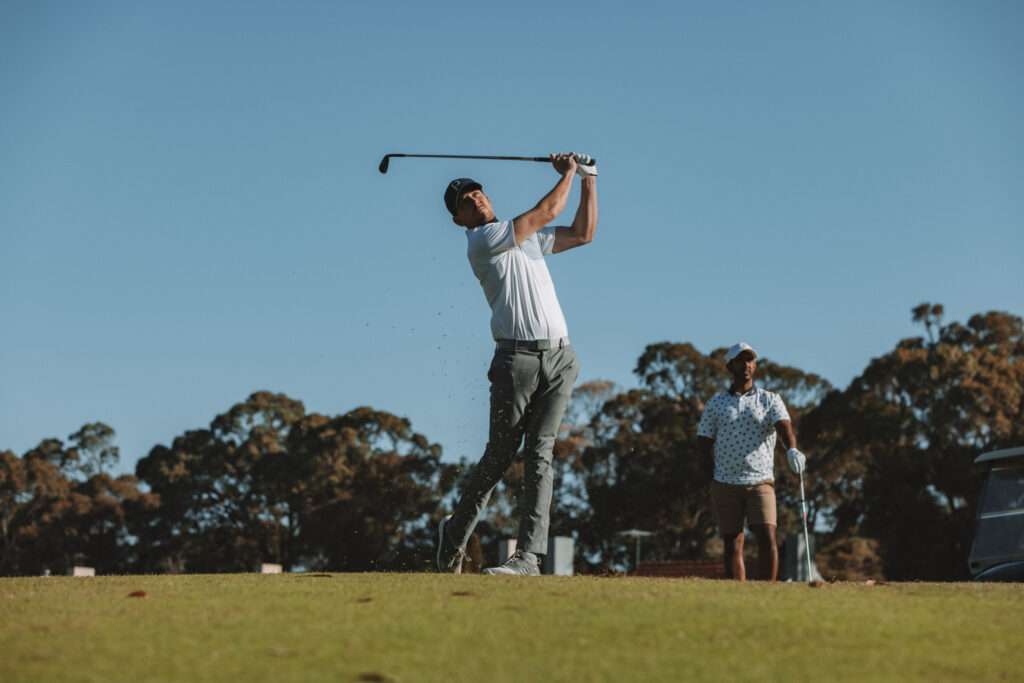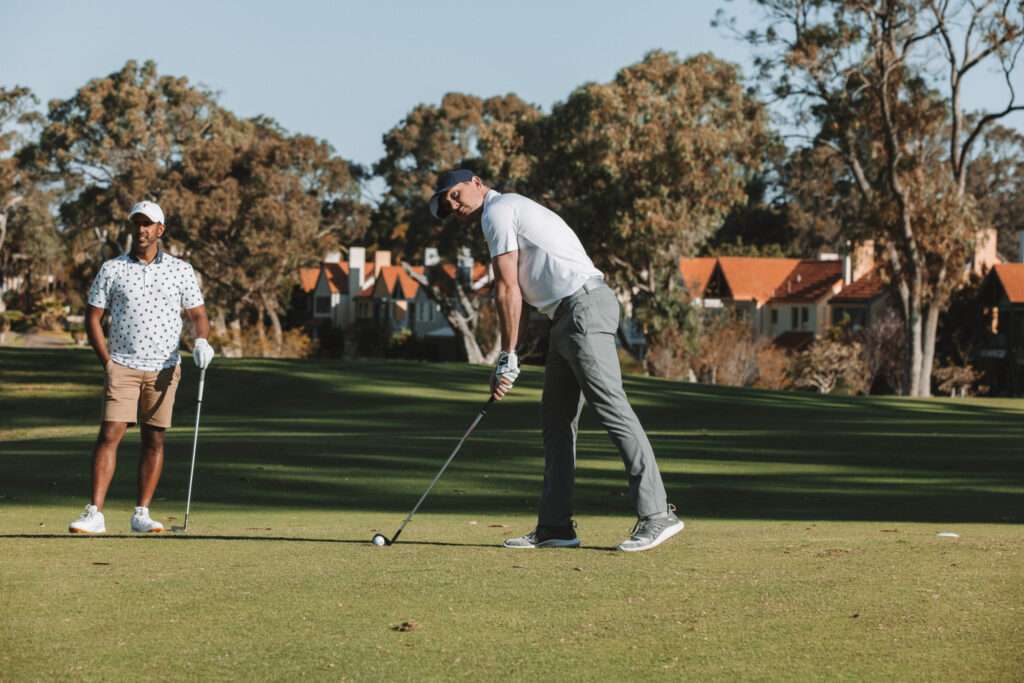Swing Tempo: Why Slowing Down Might Actually Speed Up Your Progress
We’ve all seen it, someone at the range swinging out of their shoes, chasing power and distance with every muscle in their body. But ask any great player, and they’ll tell you: golf isn’t about speed, it’s about rhythm. Swing tempo is one of the most underrated elements of a solid golf swing, and getting it right can change everything from your contact to your confidence.
In this article, we’ll explore why tempo matters, how it influences your consistency and control, and practical drills you can use to find your ideal rhythm.

What Is Swing Tempo, Really?
Swing tempo is the pace and ratio of your swing, the rhythm of how you move the club from start to finish. It’s not about how fast or slow you swing overall, but how smooth and balanced your motion is from takeaway to follow-through.
Most professionals naturally swing with a 3:1 tempo, the backswing takes about three times as long as the downswing. Even players with fast swings (like Rory or DJ) stick to this same rhythm. It’s consistent, repeatable, and helps sync up your body and club without forcing anything.
Think of it like dancing: You can dance fast or slow, but without rhythm, you’re just stepping on toes.
Why Tempo Matters More Than You Think
1. Tempo Improves Consistency
One of the biggest reasons golfers struggle with mishits, fat shots, thin shots, or wild hooks and slices, is because their swing tempo changes from shot to shot. When your rhythm changes, your timing does too. That leads to the club arriving at the ball too early, too late, or in a completely different position.
Why this matters: A consistent tempo keeps all parts of your swing, hips, arms, shoulders, and hands moving in sync. When your body and club are moving to the same beat, better contact follows.
How to apply it: Start your range sessions focusing not on hitting hard but on swinging smooth. Make a few slow-motion swings and feel everything move together.
2. Tempo Unlocks Natural Power
Most golfers equate speed with effort. They try to muscle the ball with a fast downswing, only to lose balance and spray shots. But the real power comes from leverage, timing, and sequence, not brute force.
Why this matters: A rushed swing throws your mechanics off. But when your tempo is smooth, the club naturally gathers speed through impact. You create effortless power, not panic swings.
How to apply it: Practice swinging at 80% effort. You’ll be surprised how far the ball still goes, and how much better it feels. Remember, the ball doesn’t care how hard you swing. It only reacts to the quality of the strike.

3. Tempo Helps With Pressure
Ever step on the first tee and feel your heart rate spike? That pressure often causes golfers to rush their swing, leading to poor contact and frustration. A reliable tempo is your best defence against nerves.
Why this matters: A smooth rhythm acts like an anchor under pressure. When things feel fast, your tempo brings you back to center.
How to apply it: Build a pre-shot routine that includes a couple of slow practice swings. Focus on how the swing feels rather than what it looks like. Let that feeling carry into the real shot.
Drills to Find Your Ideal Tempo
1. The “1…2…Swing” Count
This is as simple as it sounds. Say out loud (or in your head) a steady “One…Two…Swing” during your practice.
- One: Start your takeaway
- Two: Reach the top of your backswing
- Swing: Transition and strike
It’s not about slowing everything down, it’s about creating even pacing.

2. Use a Metronome
There are free metronome apps you can use to train your rhythm. Many pros use them to dial in tempo.
- Set the metronome to 60 BPM
- Match your backswing to 3 beats, downswing to 1
This trains your body to swing in time, not in tension.
3. Orange Whip or Tempo Trainers
Training aids like the Orange Whip are designed to exaggerate the feeling of smooth tempo. If you swing too quickly or out of sequence, you’ll feel it immediately.
Use it for:
- Warm-ups
- Pre-round rhythm checks
- Reinforcing swing balance
4. The Step-Through Drill
This drill naturally improves your weight transfer and tempo.
- Take your normal setup.
- As you start the downswing, let your back foot step through toward the target (like a walk-through finish).
- It encourages flow, not force.

Mindset Tips for Better Tempo
- Less is more: Your smoothest swings will almost always feel “too slow.” Trust that.
- Copy your favourite pro: Watch slow-motion videos of players like Ernie Els, Adam Scott, or Nelly Korda. Try to mimic their smooth moves.
- Feel, don’t force: Tempo isn’t something you “do,” it’s something you allow to happen. Let the swing flow.
Quick Tip: If you’re playing a round and feel your tempo getting quick, stop. Take a deep breath, swing with a slow motion feel, and re-center yourself.
Final Thoughts: Let Rhythm Lead the Way
Tempo is one of those swing elements that’s hard to measure, but easy to feel. When your swing flows in rhythm, you’ll hit better shots, avoid overthinking, and enjoy the game more.
Start every range session with a few slow, deliberate swings. Focus on the timing of your swing, not the speed of your arms. Build drills into your practice that reinforce rhythm. And when you’re out on the course, use your tempo as your key focus, especially under pressure.












